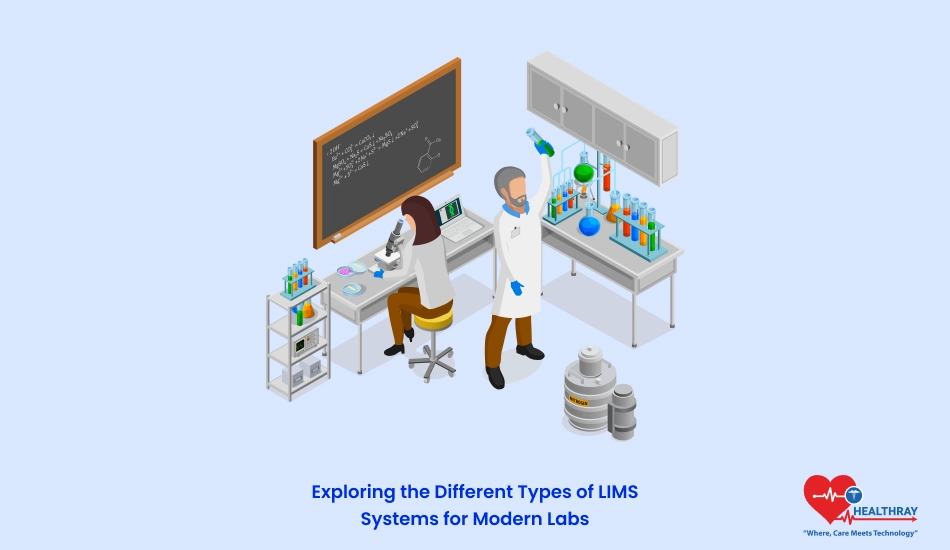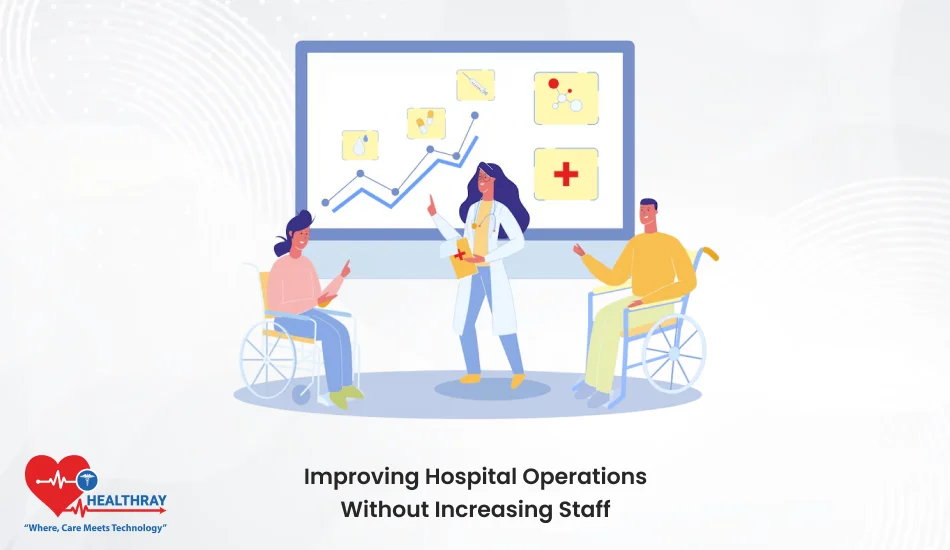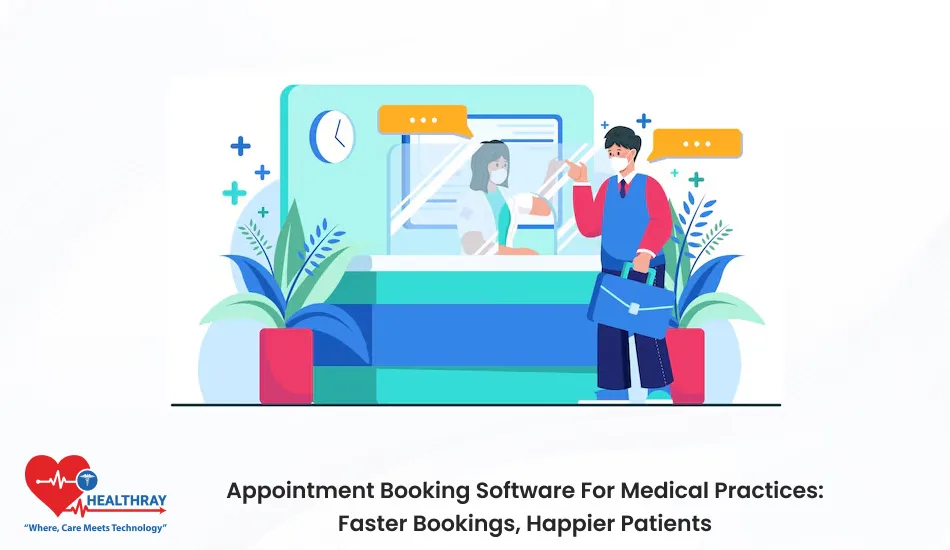A Laboratory Information Management System (LIMS) is a powerful tool used by modern labs to manage data, track samples, and streamline workflows. Demand for a high performance LIMS continues to increase, from the smallest of pathology laboratories to the largest research centres. These systems contribute to lab increased accuracy, regulatory compliance, and lab operation optimization.
In labs that handle lots of samples (e.g., clinical diagnostics or food testing labs), manual techniques or old software processes can lead to time delays, mistakes, and waste. That’s where a LIMS comes in handy. It’s more than just data management, it’s data integration (and systems design) in order to develop a system that automates workflows, ensures chain of custody and provide real-time information on what’s going on in the lab.
This article will cover various Laboratory Information Management systems available in the market today, reasons why it is the single most important component of a modern laboratory today, and how to select the right LIMS for the specific needs of individual laboratory. Whether you own a lab, manage a team, or handle the technical side, understanding the types of laboratory information management system available can significantly impact the efficiency and success of your lab operations.
Key Features of a Modern LIMS

Prior to exploring the various LIMS systems available, there is a need to learn the fundamental properties that constitute a modern LIMS, as a vital tool for laboratories today. These features help labs manage everything from daily operations to regulatory compliance. Let’s break down the most important ones:
Centralized Data Management
Centralized data storage is one of the most fundamental advantages of a LIMS. Using this functionality it is possible to record all test results, information on analyzed samples, as well as other important data in one location. It is not necessary to have separate databases, or paper records, allowing for faster data retrieval and a greater degree of accuracy.
Benefits: Easier access to information, enhanced collaboration, reduced errors.
Example: A lab technician can easily get the history of a particular sample through a single step rather than searching through multiple files or folders.
Sample Tracking and Chain of Custody
In labs that work in high throughput sample load situations, it is important to keep records of the movement of each sample from its collection point to point of testing and reporting. A LIMS automatises this by the barcode generation and each sample is logistically and technically correctly registered and tracked from the beginning to the very end of its life cycle.
Benefits: Minimizes the risk of sample loss or misplacement, compliance with audit and regulatory rules, etc.
Example: Pathology labs conducting analysis of patient samples have the ability to maintain a continuous chain of custody so that each sample handled conforms to proper handling and has traceability.
Automation and Integration with Equipment
In a contemporary LIMS, work flows from laboratory instruments can be integrated to automate repetitive work such as sample testing, result storage, and calibration of equipment. Automation not only saves time, but also reduce the incidence of human error.
Benefits: Increases lab efficiency, reduces manual data entry, improves accuracy.
Example: If your laboratory is equipped with liquid handlers, a LIMS can programme the liquid handlers without manual intervention to not only automatically guide the machines, but also directly record data into the system.
Compliance and Regulatory Support
There are labs required to meet a number of regulatory standards, regardless of whether in the healthcare, pharmaceuticals, or food testing business areas. A solid LIMS contributes to compliance in registering and documenting the right data and to establishing audit trails.
Benefits: Lightens audits and helps to maintain the compliance with industry standards such as ISO 17025 or CLIA.
Example: During an inspection audit of a lab, a LIMS can quickly produce the necessary documentation, to assure the lab’s processes comply with the regulatory criteria.
Reporting and Data Visualization
The reporting generating process usually involves work for internal users or regulatory organizations, which is, in most cases, a very tedious job. Reporting capabilities of LIMS systems provide the possibility to the labs to generate custom template reports.
Benefits: Saves time in manual report writing, delivers real-time data via dashboards and visualizations.
Example: Lab proprietors may by tracking turnaround times, notice bottlenecks, and use data-driven approaches to make decisions based analyses reports.
These are the main characteristics, which are characteristic of a LIMS, why it is an irreplaceable tool today within a modern laboratory. Not only operational effectiveness but also data quality and compliance are also enhanced. Labs will probably give each of these features varying levels of importance depending on those labs’ requirements, but these have to be the building blocks to any effective LIMS implementation.
Types of Laboratory Information Management System
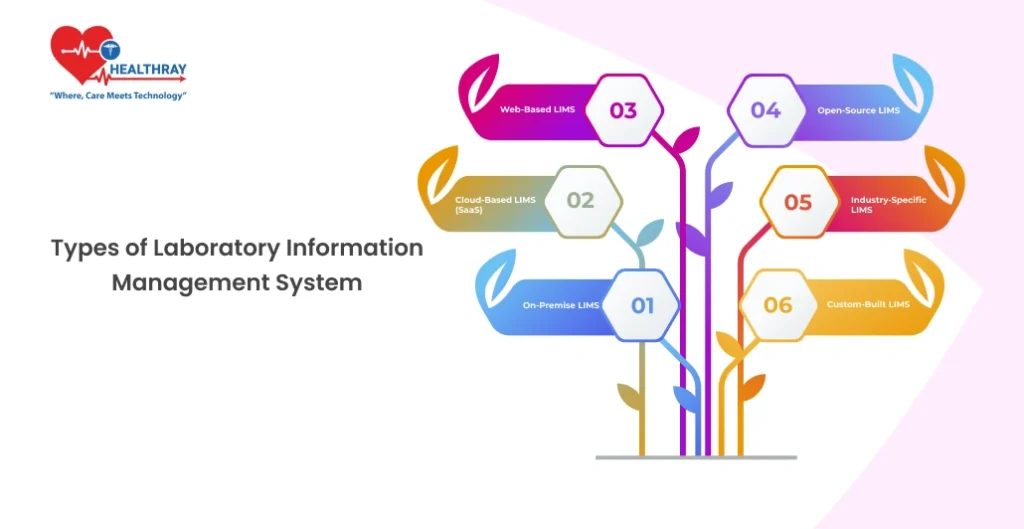
Labs have different operational needs, and selecting the right LIMS system can be crucial to managing workflows, ensuring compliance, and streamlining data management. Here are some of the most common types of laboratory information management system available today, each with its unique advantages to consider:
On-Premise LIMS
An on-premise LIMS is installed directly on the laboratory’s servers and offers full control over data security and system customization. Labs can tailor the system to suit their own requirements and operate the system themselves.
Benefits:
- Full control over data, with enhanced security.
- Complete customization of workflows and reporting features.
- Independence from external vendors for data storage and management.
This type of system is ideal for labs that have the IT infrastructure and team to maintain the system and need tight control over their data, such as pharmaceutical companies or government labs.
Cloud-Based LIMS (SaaS)
Software-as-a-Service (SaaS) LIMS, a cloud-based LIMS, resides in the cloud so laboratories can access their data anytime, anywhere with an internet connection. This platform has gained a lot of popularity because of its versatility and comparatively low entrance cost.
Benefits:
- Lower upfront investment since no extensive hardware is required.
- Scalable: It can be scaled based on the lab’s growing needs, with ease of scaling, as required.
- Very accessible from everywhere, for remote work and collaboration.
- Regular updates and system maintenance handled by the service provider.
This is a great solution for labs with small-to-medium size, startups, or labs with low in-house IT support. It’s easy to implement, flexible, and highly cost-effective.
Web-Based LIMS
A lab-sided LIMS is similar to cloud-based LIMS, but instead of accessing a system from the internet, the LIMS is hosted on local servers (e.g., in-house server, workstation, or personal computer) that are in the lab network. However, it provides remote access all while retaining control over the data storage of the labs.
Benefits:
- Remote control function permitting the usage from any place.
- More control for the data when it is stored on local servers.
- Much as cloud-based systems, but with greater hardware and LIMS Software system control.
This kind of LIMS is well suited to those laboratories that want the flexibility of accessing data remotely and that they want to control data security and storage.
Open-Source LIMS
In labs, an open-source LIMS grants labs the flexibility to adjust and enhance the source code of the LIMS to specifically address and adapt to the needs of the lab. There can be a high flexibility and these systems are frequently selected by labs with good IT platform.
Benefits:
Complete customizability, providing laboratory the ability to engineer and integrate new functions to conform to its specific needs.
Approaches that are economically feasible, as open-source systems often come at a low or no licensing cost.
This is a good solution for labs that have in-house development or robust technical capability. Open-source LIMS is a potent resource for labs seeking full control of their system.
Industry-Specific LIMS
Industry-specific LIMS are designed with pre-configured workflows and tools to meet the needs of particular industries, such as healthcare, food testing, or environmental monitoring. Such systems are commonly designed to conform to regulatory standards and industry best practices.
Benefits:
- Work-flow and functionality already pre-configured for the needs of the industry.
- Easier implementation since the system has already been designed in accordance with industry needs.
This kind of LIMS is suitable for companies that operate in industries with very strict regulatory requirements, eg, clinical diagnostics, environmental testing, or pharmaceutical. Because it offers an efficient, industry adaptable solution without custom fitting, etc.
Custom-Built LIMS
A custom-built LIMS is built from the ground up for the specific needs of a lab. Such a system has maximum freedom and freedom to manipulate it but it imposes a high investment of time and resources.
Benefits:
Total personalization, providing the lab the ability to build the system in a way that it fits best with the laboratory’s own workflow, and data management needs.
Panoramic view, besides features, security, and data management.
Such a system is often selected by big labs or ones with complex workflows that cannot be supported by off-the-shelf or industry-specific systems. It is the most flexible and widely used by laboratories needing special purpose solutions for their needs.
How to Choose the Right LIMS for Your Lab?
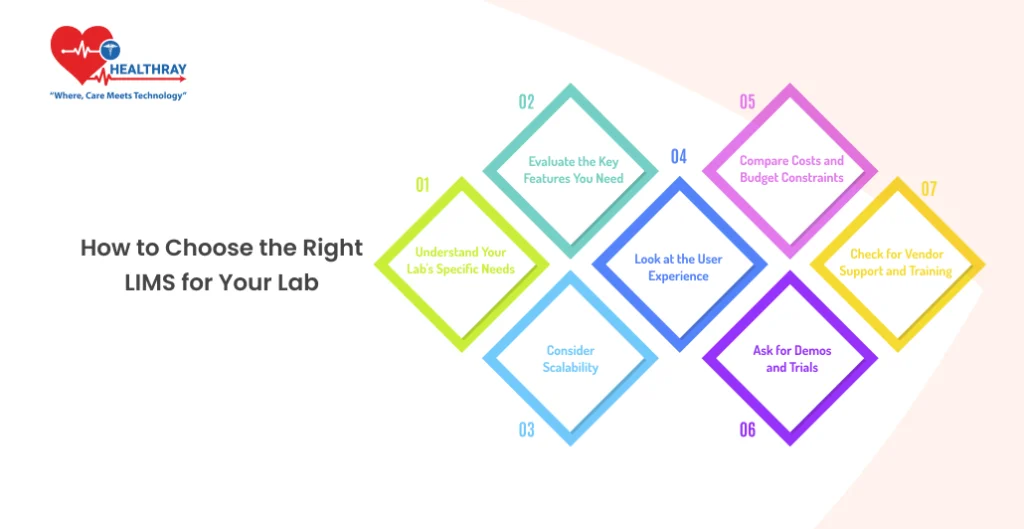
This process of selecting the proper LIMS system for your laboratory environment may be a pretty complicated one. Labs vary very widely in their operation, both in terms of size, with regard to the level of regulatory oversight, and in terms of data management needs. The proper decision would be to identify what are the needs of your lab and what is matched to what the options that the LIMS can provide. Here is your guide to do so:
Assess the size and complexity of your lab
The first evaluation to be made of a LIMS is to assess the scale and complexity of the operations of your laboratory. For smaller laboratories, the system only requires enough functionality to track and report on samples, whereas larger laboratories with hundreds of samples, multiple types of samples, and sophisticated hardware instrumentation may require a more complex LIMS with capabilities that include automation, real-time data visualization, and scalability.
Small Labs: If you’re running a small lab, a cloud-based or industry-specific LIMS might be the best choice. These systems have a tendency to be cheaper, faster to put in place, and require less IT personnel to keep up.
Large Labs: For more extensive labs, which handle large or complex numbers of samples, the on-premise LIMS might be ideal. To such labs, more stringent requirements may persist, more in terms of automated workflows, data integration, and high-level customization, not to mention that such advanced requirements are certainly not likely to be addressed by most cloud-based products.
Understand Your Lab’s Data Handling Needs
Different labs produce different kinds of data. A LIMSs developed and managed by a research laboratory may be focused on experiment tracking and analysis, whereas a clinical laboratory may require one to assure regulatory compliance and patient data protection. Consider what kind of data your lab produces, how it’s handled, where it’s put, and how it’s presented.
Data Security: If data protection is of extreme importance, for example, in pharmaceutical or laboratory health care applications, you may be interested in on-premise or web-based LIMS systems in which the data can be accessed locally, thus allowing you to have some control over the data.
Data Integration: If your lab has more than one instrument or needs to interface with other software, such as CRM or ERP systems, be sure the LIMS you choose supports integration with these platforms.
Consider Regulatory Requirements
In the highly regulated sectors of health care, pharmaceuticals, or environmental testing, compliance with regulatory requirements is an absolute mandate; thus, various LIMS vendors offer varying levels of regulatory support, so one LIMS system should be selected based on the regulatory criteria to be achieved.
Healthcare and Pharmaceuticals: Laboratories in these areas often require a system that is capable of supporting compliance with regulations such as CLIA or ISO 17025. An industry-environment restricted LIMS may include the necessary setup to support these needs a priori.
Assess Budget and Long-Term Costs
Do not consider the initial price of a LIMS. Consider the ongoing costs, such as maintenance, updates, and scaling, as your lab grows. Cloud-based LIMS systems generally have lower initial subscription costs, although they may impose recurring subscription fees. On-premise systems, although initially more costly, can be a better investment in cases of large labs that demand total control and customisation.
User-Friendliness and Support
The ease of use of a LIMS system is one of the critical factors for successful integration into the work processes by laboratory staff. A complicated, intricate, and hence difficult-to-work-around system has been shown to slow down about lab operation and lead to its increasing chances of mistakes. Find systems that are easy to use, deliver the right level of training, and include customer support if required.
On the other hand, the quality of customer service and technical support from the LIMS vendor has to be considered. Support can vary greatly from very limited systems, such as open-source LIMS, to full support desks and resources via specialized support teams.
In conclusion, the right LIMS for your lab depends on a combination of factors, including your lab’s size, data requirements, regulatory compliance, and budget. Through a careful analysis of these requirements and evaluating them against the capabilities of various LIMS systems, you are able to arrive at an informed choice that strengthens the productivity and performance of your lab.
Conclusion
Choosing the appropriate LIMS system is a challenging choice for any laboratory. There is an appropriate level of system form that can streamline workflows, increase data accuracy, and support regulatory compliance. Based on our discussion above, there exists different types of LIMS systems; each has varying application, such as control for an on-premise system, flexibility in a cloud-based version, or customization of the open-source LIMS. Future trends, including AI integration and improved mobile accessibility, will make LIMS systems even more essential for modern labs.
Ultimately, the decision will depend on the size of your lab, complexity, data requirements, and long-term goals. The right Hospital Management System will improve efficiency but also offer flexibility and scalability to adapt to future demands. As technology advances, the labs that keep ahead with the right LIMS will be well-positioned for success.
